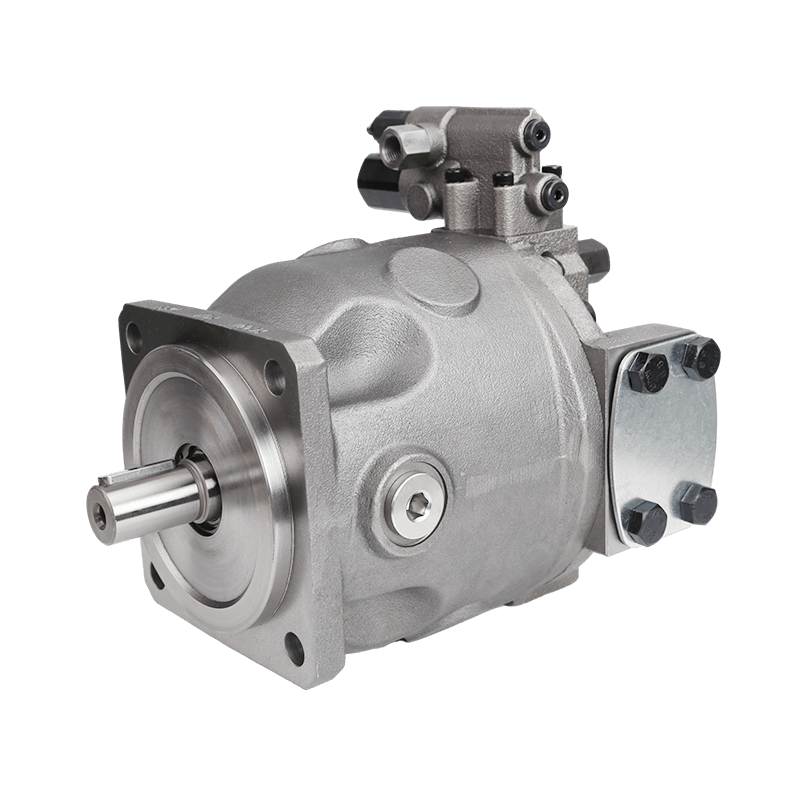What Causes Wear and Tear on Gear Oil Pumps?
Gear oil pumps play a role in systems by enabling smooth functioning and optimal efficiency. However, due to wear and tear over time like any mechanical equipment, it is essential to comprehend the causes behind this decline to effectively preserve your gear oil pump performance.
Factors Contributing to Gear Pump Deterioration
Gear oil pump degradation can occur due to factors such as contamination being a reason for it happening. Dirt particles in the hydraulic fluid can lead to abrasions on the pump’s internal parts; operating under high pressure and temperature can also speed up wear and tear processes; and neglectful maintenance practices like irregular oil changes or using the wrong fluid types play a major role in worsening pump conditions.
Signs of Wear and Tear in Gear Oil Pumps
Spotting signs of wear and tear can help you avoid repairs or replacements down the line. Look out for cues, like noises while in use or a decrease in pump effectiveness. Leaks from seals or fittings are another flag to watch for. If you notice a dip in system performance too it could mean that some internal components are wearing out or getting damaged.
How Can You Monitor the Condition of Your Gear Oil Pump?
Regularly checking the health of your gear oil pump is crucial, to extending its longevity and keeping it running at its performance level, which involves following set inspection routines and using equipment as part of the maintenance procedure.
Routine Inspection Procedures
Make sure to include checkups as part of your maintenance routine examining for any signs of wear, like cracks or leaks near the pump casing and connections. Review the fluid for any contamination by watching out for changes, in color or foreign particles. Monitor the noise levels during operation consistently as any alterations might signal problems.
Diagnostic Tools for Assessing Gear Pumps
Using instruments can offer an examination of the state of your gear oil pump. Vibration analysis aids in spotting any imbalances or misalignments in the pump setup. Thermal imaging is effective in pinpointing areas with heat indicating friction or deteriorating parts. Pressure gauges come in handy for tracking system performance. Pinpoint obstructions or inefficiencies.
When Should You Consider Replacing or Repairing Your Gear Oil Pump?
Determining whether to fix or swap out a gear oil pump hinges, on factors such, as the level of damage and a thorough evaluation of costs and benefits.
Evaluating the Extent of Wear and Tear
It’s important to evaluate how worn out something is before deciding what to do like if you catch problems such as leaks early enough you might just need repairs to fix them up fine; but if there are big issues like worn gears or cracks in the housing then replacing parts is usually the way to go to prevent more serious problems, down the line.
Cost-Benefit Analysis of Repair vs. Replacement
By weighing the costs and benefits involved in either fixing or replacing a product, over the term helps in making a smart decision financially wise. You need to compare the expenses associated with repairs to the loss of productivity and upcoming maintenance costs. There are situations where purchasing a line model, with enhanced functionalities could be a more cost-effective choice instead of constantly repairing an old unit.
Looking for options? POOCCA provides a selection of products crafted for lasting performance and effectiveness right here on our shelves! The CBX Series Hydraulic Gear Pump from POOCCA is an example of notch high-pressure capabilities combined with a sleek low displacement design perfect for a variety of uses. Ensuring durability even in tough conditions.
Understanding the ins and outs of maintaining and assessing gear oil pumps enables you to make informed choices that boost system dependability and trim down expenses.
How to Extend the Lifespan of Your Gear Oil Pump?
Ensuring that your gear oil pump lasts longer is crucial for keeping things running smoothly and cutting down on expenses in the run. By following maintenance practices and using top-notch parts you can guarantee that your equipment stays reliable and durable.
Implementing Preventive Maintenance Strategies
Ensuring your gear oil pump stays in shape involves taking an approach through preventive maintenance practices, like regular checkups and servicing to catch any problems early on and prevent costly repairs down the line.
- Routine Fluid Checks: Regularly check the hydraulic fluid levels and quality. Contaminated or low fluid levels can lead to increased friction and wear on pump components.
- Filter Replacement: Ensure that filters are replaced according to the manufacturer’s recommendations to prevent debris from entering the system.
- Seal Inspections: Periodically inspect seals for signs of wear or leakage, as damaged seals can lead to fluid loss and reduced pump efficiency.
Choosing Quality Products for Optimal Performance
Choosing top-notch items is essential to guarantee your gear oil pump functions throughout its lifespan. Improve efficiency by investing in known brands recognized for their durability and performance capabilities. Take into account pumps that come equipped with the following features;
- High Mechanical Efficiency: Look for pumps designed with high mechanical efficiency to reduce energy consumption and wear.
- Low-Noise Operation: Pumps that operate quietly can indicate smoother operation and less internal friction, contributing to longer service life.
- Robust Construction: Choose pumps made from durable materials like cast iron or aluminum, which offer superior resistance to wear under harsh conditions.
How Do Industry Experts Approach Gear Oil Pump Maintenance?
Experts, in the industry utilize techniques. Welcome technological progress to enhance the maintenance of gear oil pumps, which can assist you in integrating top-notch strategies into your daily operations.
Best Practices from Leading Professionals
Experts, in the field, suggest strategies for the upkeep of gear oil pumps.
- Regular Training: Ensure that maintenance personnel receive ongoing training on the latest techniques and technologies related to gear oil pump care.
- Data Analysis: Utilize data analytics tools to monitor pump performance metrics, allowing for timely interventions when anomalies are detected.
- Comprehensive Documentation: Maintain detailed records of all maintenance activities, including inspections, repairs, and component replacements, to track performance trends over time.
Innovations in Gear Oil Pump Technology
Advancements in gear oil pump technology are constantly improving reliability and efficiency enabling you to stay updated on the innovations for your maintenance approach.
- Smart Sensors: Incorporate smart sensors that provide real-time data on pump conditions, enabling predictive maintenance and minimizing unexpected failures.
- Advanced Materials: Explore pumps constructed with advanced materials that offer enhanced resistance to wear and corrosion.
- Efficient Designs: Consider newer designs that improve volumetric efficiency while reducing energy consumption.
Looking for hydraulic system solutions? POOCCA has a lineup of top-notch products built for lasting performance here! They offer high-quality gear pumps ideal for jobs that guarantee reliability and sturdy design for your peace of mind.
By implementing these tactics and utilizing the knowledge of specialists in the field, you can successfully prolong the longevity of your gear oil pump maintaining efficiency while maximizing cost-effectiveness.










